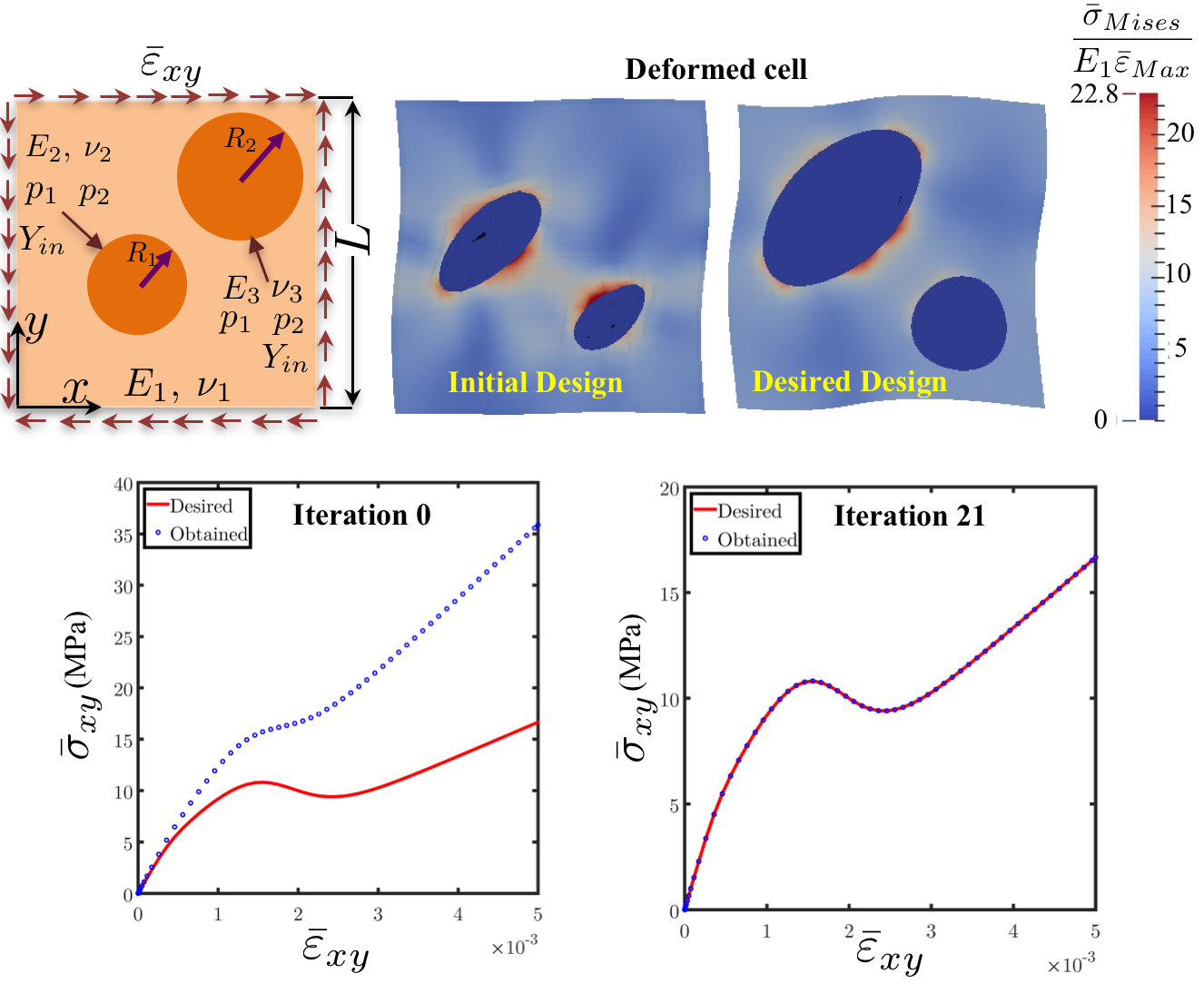The ability to design the microstructure of a material to achieve a desired macroscopic response has long been a “holy grail” in mechanics and materials science. Recent advances in manufacturing techniques and simulation tools have made this goal more feasible. The key challenge in this line of work is how to optimize the material microstructure to achieve a desired macroscopic constitutive response. Motivated by key advances in recent manufacturing techniques and computational tools, we develop numerical tools to design heterogeneous materials at the microscale to achieve desired macroscopic properties. In our design-based approach, the path of design flows from performance and properties to structure and processing (top-down approach), in contrast to the traditional bottom-up path of design that follows the cause-and-effect path.
 Multiscale design of a nonlinear composite: a periodic unit cell including two inclusions. The design variables are the size (radius) and location of the two particles and the nonlinear material properties of inclusions. Stress-strain curves for the first and last iterations. The desired response is shown by the solid curve, while the computed (designed) response is plotted with symbols. This work was done in collaboration with Dr. Safdari (Illinois Rocstar Startup), Dr. Geubelle and Dr. Tortorelli (UIUC).
Multiscale design of a nonlinear composite: a periodic unit cell including two inclusions. The design variables are the size (radius) and location of the two particles and the nonlinear material properties of inclusions. Stress-strain curves for the first and last iterations. The desired response is shown by the solid curve, while the computed (designed) response is plotted with symbols. This work was done in collaboration with Dr. Safdari (Illinois Rocstar Startup), Dr. Geubelle and Dr. Tortorelli (UIUC).
Related Publications
- Raeisi Najafi A., Safdari, M., Tortorelli D.; “Multiscale design of nonlinear materials using a Eulerian shape optimization scheme” International Journal for Numerical Methods in Engineering, vol 122, pp. 2981– 3014, 2021.
- Raeisi Najafi A., Safdari, M., Tortorelli D., Geubelle, P.; “Material Design Using a NURBS-based Shape Optimization” 57th AIAA/ASME/ASCE/AHS/SC Structures, Structural Dynamics, and Materials Conference, San Diego, California, USA, January 4-8, 2016.
